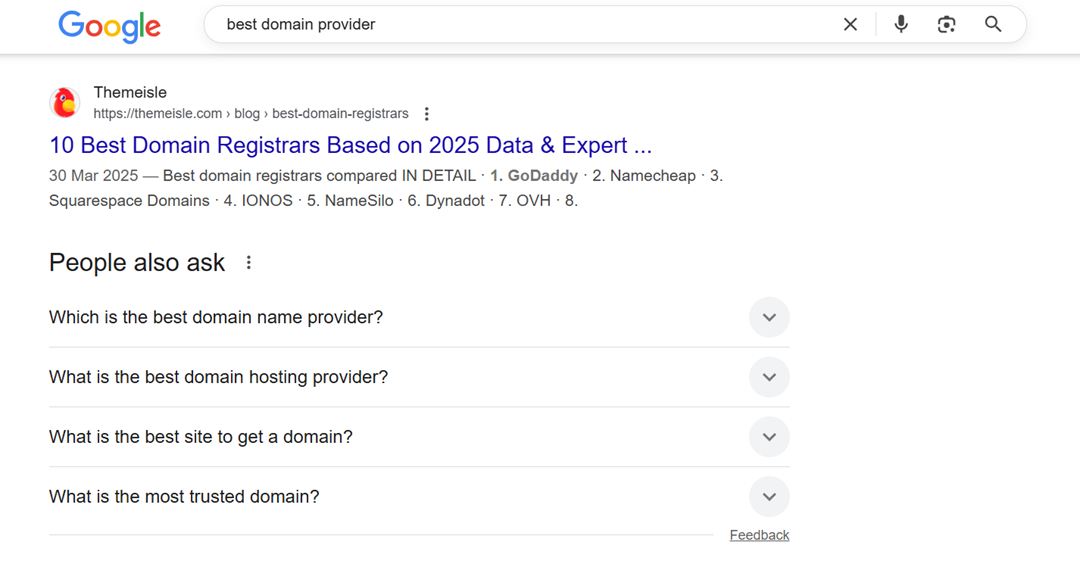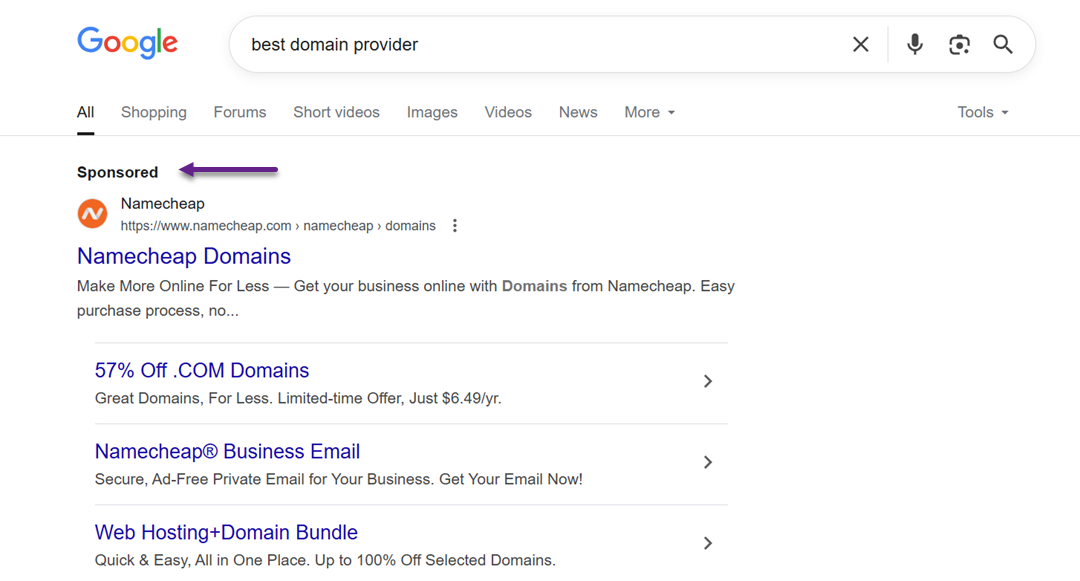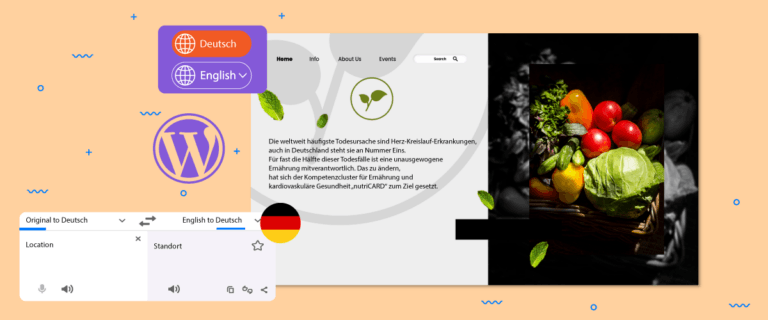SEO benchmarks help you understand how your website performs compared to industry standards, especially in multiple languages and markets. In the context of multilingual SEO, these benchmarks provide critical insights into how organic visibility, user engagement, and technical implementation vary across regions and languages.
This article’s comprehensive multilingual SEO performance benchmarks are based on real-world industry data. This article will help you understand what drives successful multilingual websites, from organic traffic sources and keyword rankings to hreflang accuracy and content performance by region.
Website traffic & search overview

To benchmark your multilingual SEO performance, analyze your website traffic sources. Understanding the share of organic vs. paid traffic, and how much comes from channels like social media, email, or direct visits, helps you gauge visibility and performance across languages and markets.
Organic vs paid search traffic
Organic search traffic, the visitors who find your site through unpaid search results, is one of the most reliable indicators of SEO success. It reflects how well your content ranks naturally without ad spend. For multilingual websites, tracking organic traffic across different language versions is essential to understand which locales perform best and which need optimization. Benchmarks show that while top-tier sites may attract millions of monthly organic visits, the average B2B site typically sees 1,000 to 10,000 visitors.

Paid search, meanwhile, offers more immediate traffic through ads, but requires ongoing budget allocation. Though it can provide a temporary boost in visibility, it doesn’t reflect the long-term strength of your SEO.

Comparing traffic types helps determine whether your SEO strategy is sustainable or overly dependent on paid efforts, especially when launching in new language markets.
Social media, email, and direct traffic impact
Beyond search, traffic from social media, email campaigns, and direct visits can supplement your SEO efforts. Social media, in particular, plays a significant role for B2C brands. In industries like apparel and footwear, platforms like Instagram or TikTok can drive massive traffic volumes, sometimes outperforming search. A good example: in April 2023, the apparel sector saw over 192K pageviews from social media—more than 20 times the industry median.
Email marketing and direct visits often reflect brand loyalty and user engagement. While these aren’t SEO channels, they impact overall visibility and conversions. Assessing these sources by language and region for multilingual sites can uncover content types or messages that resonate locally and provide insights for optimizing search and non-search traffic strategies.
Key multilingual SEO performance metrics

Core SEO metrics help you objectively measure the performance of your multilingual site in various markets. You can identify areas of SEO strength and weakness by understanding how much traffic is generated per language, how high your keyword positions are, and how users interact with pages. This section presents important indicators to track the effectiveness of your global strategy.
Organic traffic share by language
This metric measures how big a portion of organic traffic comes from each language available on your site. This is important for assessing the effectiveness of SEO strategies in each language version. If one language contributes much more traffic than another, it could be that the other language needs improvement in content, technical structure, or backlink distribution. Ideally, each major language of the target market accounts for at least 10-20% of organic traffic, depending on the proportion of the audience.
For example, if your site is available in English, French, and Spanish, but 80% of the traffic comes from the English version. The content in the other two languages needs to be reviewed in terms of local relevance and technical SEO such as hreflang and internal linking structure.
Keyword rankings and search visibility
Looking at keyword position per language helps you understand search visibility in each market. This also includes the Search Visibility Score, which is an estimate of what percentage of users are viewing your site for a particular keyword. For multilingual SEO, it’s important to evaluate whether translated versions are targeting relevant local keywords. If not, the ranking can be low even if the content is well translated.
For example, an e-commerce site with the product “running shoes” might translate it to “chaussures de course” in French. However, if the audience in France is more likely to search for “baskets de sport”, then the literal translation won’t help in terms of visibility.
Click-through rates (CTR) and impressions
CTR shows how attractive your title and description are in search results. Impressions measure how often your page appears. A healthy CTR in organic search results is usually around 3-5% for position 3 and below, and can reach 25-30% for position 1. If the CTR is low even though the ranking is good, it could be that the translation of the meta title and description does not match the expectations of local users.
For example, meta descriptions in German that are too formal or use phrases that are rarely used locally can reduce attractiveness, even though the page position is in the Top 3.
Conversion rate by locale

This metric measures how many visitors from each region or language take an important action-such as a purchase, registration, or demo request. Low conversion rates may indicate that content is not culturally or functionally compelling enough. Average conversion targets vary, but for high-intent pages, a range of 2-5% is considered healthy.
For example, a product offer page in Japanese may perform poorly because it doesn’t list the price in Yen or doesn’t include local payment methods such as convenience stores, even if the visuals and language are well translated.
Top traffic sources by region
Knowing where your traffic comes from-whether from search, social media, referrals, or direct-helps you gauge the effectiveness of each channel in different regions. For multilingual SEO, it also shows whether audiences from certain countries are more active through organic search or need the support of paid campaigns to achieve the same results.
For example, a B2B site in German might get more traffic from local industry site referrals, while the Spanish version is more through Google Ads campaigns, meaning SEO and promotion approaches must be customized per region.
User engagement metrics

User engagement metrics help you understand how real people interact with your website. Let’s break down the key engagement metrics to track and what they tell you about your multilingual website performance.
Bounce rate
Bounce rate reflects the percentage of visitors who land on a page and leave without interacting further. A high bounce rate often means your content doesn’t match user expectations, the site is slow to load, or navigation is confusing. For multilingual sites, this might signal that your translated content isn’t resonating with users in a specific locale. A bounce rate between 26–40% is excellent, while rates above 70% suggest urgent UX or content relevance issues.
Pages per session
This metric tracks how many pages a visitor views in one session. A high pages-per-session score indicates effective internal linking and strong content engagement. For multilingual sites, it can highlight which locales are navigating deeper and which are not. On average, sites see around 2.6 pages per session, while high-performing sites often exceed 4 or even 5.2 pages. Industries like travel or grocery typically see much higher averages.
Time on page
Time on page measures how long users stay on a specific page. It indicates whether your content is engaging and valuable. If users from a certain region consistently spend less time on your pages, translation quality or content relevance is lacking. Users spend about 52–54 seconds per page on average, though B2B audiences often stay longer (around 1:22), and B2C audiences may average about 1:32.
Return visitors
Return visitors are users who come back to your site after their first visit. This is a strong signal of trust and content value. In multilingual SEO, tracking return visitors by language helps you understand where you’re successfully building long-term audience relationships. A good return visitor rate is generally above 30%, with 30–50% being an ideal target, depending on your industry and site type.
Exit rate
Exit rate indicates the percentage of users who leave your site from a particular page. While some exits are expected (like on blog posts or thank-you pages), high exit rates on product or landing pages may highlight clarity, content, or speed issues. Ideally, product pages should aim for a 40–60% exit rate, while category pages should stay lower, around 20–40%. Monitoring exit rates per language can guide your optimization efforts where they’re most needed.
Metric | Benchmark |
Bounce rate | 26–40% is excellent; over 70% may indicate UX or content mismatch. |
Pages per session | Average is 2.6 pages; high-performing sites may exceed 4–5.2 pages. |
Time on page | Typical average: 52–54 seconds. B2B: 1:22, B2C: 1:32. |
Return visitors | A healthy return visitor rate is 30–50%. |
Exit rate | Product pages: 40–60%. Category pages: 20–40%. |
Link-building metrics for multilingual site

Monitoring link-building metrics is essential for tracking SEO performance across regions when optimizing a multilingual website.
Domain authority
Developed by Moz, Domain Authority (DA) is a score from 1 to 100 that estimates how likely a website is to rank in search results. While not used by Google directly, it helps compare your site to competitors. A score of 50–60 is good, and above 60 is excellent.
Referring domains
Referring domains are the unique websites linking to your site. They’re a strong signal of trust and authority. For multilingual websites, aim for 100–300 referring domains, especially from local directories, media, and regional partners.
Link quality scores
This score measures the value of a backlink. Links from high-authority, relevant websites carry more weight. A strong link quality score typically ranges from 7 to 10, with 8–10 considered excellent.
Citation flow
Citation Flow (CF), created by Majestic, reflects a site’s number of backlinks, rated from 0 to 100. A score above 40 suggests a strong backlink profile, but it should be balanced with Trust Flow to avoid low-quality links.
Trust flow
Trust Flow measures the quality of backlinks based on how trustworthy the linking sites are. Scores above 50 indicate a strong profile, while 10–50 are average. A healthy Trust Flow should closely match or exceed Citation Flow.
Metric | Benchmark |
Domain authority | Score of 50–60 is considered good; above 60 is excellent. |
Referring domains | Aim for 100–300 referring domains, especially from local or regional sources. |
Link quality score | A strong score ranges from 7 to 10; 8–10 is considered excellent. |
Citation flow | A score above 40 is strong; should be balanced with Trust Flow. |
Trust flow | Scores above 50 are strong; 10–50 is average; ideally close to or above CF. |
Multilingual content performance metrics

Evaluating the performance of your translated and localized content is crucial to understanding how well your SEO strategy resonates across different languages and regions. These metrics reveal what types of content perform best, where your gaps lie, and how users engage with your pages depending on the device or region.
CTR on translated vs localized content

Click-through rate (CTR) helps you measure how often users click your links after seeing them in search results. Comparing CTR between translated (word-for-word) and localized (regionally adapted) content gives insight into which approach performs better. Localized content drives higher CTR because it aligns better with local search intent, tone, and cultural expectations.
For example, a German landing page that simply translates “free trial” as kostenlose Probe may not engage users as effectively as using a more familiar phrase like gratis testen, which feels more natural to local audiences. According to Backlinko, the #1 result in Google’s organic search has an average CTR of 27.6%, showing that well-optimized, culturally relevant content can significantly boost engagement and click-through rates.
Top performing page types
Identifying which types of pages (e.g., product pages, blog posts, FAQs, or landing pages) perform best by language or region helps you prioritize content production and optimization. Different regions may value different content, blogs may perform well in France due to strong search intent for information, while product pages dominate in Japan due to direct shopping behavior.
You can use tools like Google Analytics or Google Search Console to segment performance by content type and locale. For instance, in multilingual eCommerce, product pages in Spanish-speaking regions may outperform others due to high demand for local language product information and trust signals.
Content gaps and keyword coverage

Content gaps occur when your website lacks content targeting specific queries your audience is searching for. Evaluating keyword coverage by language reveals whether your translated content aligns with actual user search intent in that region. Often, translated pages fail to cover local long-tail keywords or trending topics.
A good practice is to conduct keyword research per locale using tools like Ahrefs or Semrush. For example, while “cheap flights” might work well in English, in Italy users may search for voli low cost, a term your content should include. Closing these gaps boosts visibility and makes your multilingual strategy more competitive.
Featured snippets and content freshness
Securing featured snippets is a sign of strong SEO performance, especially in multilingual contexts. Snippets vary by language and often reward well-structured, up-to-date content tailored to local questions. Freshness also plays a role, Google prioritizes recent content in niches like finance, tech, or news.
If your French blog about “cybersecurity tools 2023” hasn’t been updated, it might lose its snippet to a newer, localized post from a competitor. Use structured formatting (e.g., bullet points, tables) and update multilingual content regularly to maintain relevance and increase your chances of earning snippets across languages.
Mobile vs desktop SEO performance by region
User behavior can vary significantly between mobile and desktop depending on region. In many Asian and African countries, mobile usage dominates, while desktop remains more common in parts of Europe and North America. Analyzing SEO performance by device and region helps tailor your multilingual UX and content strategy accordingly.
For instance, if your Indonesian-language site gets 85% of traffic from mobile, but has a high bounce rate, it may indicate mobile UX or Core Web Vitals issues. Benchmark loading time under 2.5 seconds and optimize layout for small screens to maintain engagement and rankings across devices.
Technical multilingual SEO benchmarks

When managing a multilingual website, technical SEO plays a critical role in ensuring each language version is correctly indexed and performs optimally. These benchmarks help identify areas to improve and compare performance across regional versions.
Hreflang implementation accuracy

Proper hreflang implementation ensures that users are directed to the correct language version of your site based on their region or language preferences. Errors in hreflang tags, such as incorrect codes or missing return tags, can lead to duplicate content issues and misdirected traffic. Regularly auditing your hreflang setup using tools like Ahrefs or Screaming Frog is essential for large multilingual sites.
For example, if your Spanish version targets Spain (es-es) and Mexico (es-mx), you must include both hreflang tags and point them back to each other. Google’s Search Console does not flag all hreflang errors, so relying on external tools is often necessary to ensure accuracy across all languages and regions.
Domain structure comparison
Multilingual sites typically choose among subdirectories (example.com/es/), subdomains (es.example.com), or country-code top-level domains (example.es). Each structure has SEO implications—ccTLDs often perform better in local search but require separate authority building, while subdirectories consolidate SEO strength.
For example, Linguise uses subdirectories for its multilingual pages, such as https://www.linguise.com/ar/ for Arabic. This structure allows all language versions to benefit from the SEO strength of the main domain, while simplifying management and tracking. You can benchmark effectiveness by analyzing traffic and keyword performance across subfolders using tools like Google Search Console or Semrush.
Crawl budget and indexation issues across markets
Google allocates a crawl budget to each site, which can be strained by duplicate content across languages or improper use of canonical tags. When multilingual pages aren’t properly managed, they may not be crawled or indexed efficiently, especially on large sites.
Use tools like Google Search Console and log file analysis to monitor crawl frequency and ensure important localized pages are indexed. For example, if a Japanese site version sees significantly lower index rates, it might indicate a crawl budget issue or poor internal linking. Keeping localized sitemaps up to date helps search engines discover and prioritize new content.
Page speed scores and core web vitals

Page load speed affects both user experience and rankings. Google’s benchmark for Largest Contentful Paint (LCP) is under 2.5 seconds, while First Input Delay (FID) should be under 100 ms, and Cumulative Layout Shift (CLS) under 0.1. These benchmarks apply to all versions of your multilingual site.
For example, if your German version uses heavy imagery or fonts not optimized for the web, it may underperform compared to your English version. Tools like PageSpeed Insights and WebPageTest can reveal differences in core web vitals across language versions, helping you fine-tune performance region by region.
Mobile usability across languages
A mobile-friendly experience is crucial for global audiences. Some languages (like German or Finnish) use longer words, which can break layouts or cause text to overflow on smaller screens. Mobile usability tests should account for these differences to ensure consistency.
For example, a Spanish version of your landing page may look clean on mobile, but the Russian version may have font or layout issues that disrupt readability. Google’s Mobile-Friendly Test can highlight these issues. It Benchmarks mobile usability by tracking bounce rates, mobile page speed, and device-specific engagement per language.
Industry-specific SEO benchmarks

To evaluate SEO performance effectively, it’s important to understand how your industry compares in key metrics such as sessions, users, pageviews, bounce rates, time on page, and new users. Below is a consolidated table of benchmarks across various sectors.
Industry | Sessions | Users | Page views | Bounce rate | New users | Avg. time on page |
Apparel & Footwear | 18.16K | 21.41K | 192.86K | 46.97% | 30.49K | – |
Automotive | 11.2K | 9.06K | 25.79K | 57.13% | 4.15K | 1m 25s |
Construction | 2.24K | 1.86K | 4.44K | 67.24% | 1.7K | 1m 46s |
Consulting & Professional Services | 2.58K | 1.91K | 4.24K | 66.00% | 2.11K | 1m 36s |
eCommerce & Marketplaces | 9.57K | 7.08K | 33.39K | 58.11% | 6.56K | – |
Education | 6.54K | 5.37K | 35.88K | 57.95% | 10.95K | 1m 28s |
Food | 10.43K | 6.12K | 21.03K | 56.62% | 11.2K | 1m 08s |
Health Care | 4.21K | 2.46K | 9.95K | 58.29% | 2.85K | 1m 27s |
Health & Wellness | 4.29K | 3.18K | 6.9K | 59.44% | 1.43K | 1m 26s |
IT & Services | 3.56K | 2.87K | 8.68K | 62.27% | 3.53K | 1m 43s |
Industrials & Manufacturing | 3.85K | 3.04K | 8.01K | 58.40% | 2.89K | 1m 23s |
Real Estate | 3.22K | 2.02K | 9.03K | 46.85% | 2.62K | 1m 34s |
SaaS | 3.16K | 2.74K | 7.14K | 64.46% | 3.52K | 1m 45s |
Technology | 4.32K | 3.66K | 11.27K | 61.53% | 5.31K | 1m 46s |
Travel & Leisure | 7.87K | 7.12K | 26.8K | 54.66% | – | – |
Challenges & missed opportunities

Even the best multilingual SEO strategies can face roadblocks. Understanding where things often go wrong, and how to fix or avoid them, can help you maintain consistent performance across languages and regions.
Underperforming translations and user experience
One of the biggest pitfalls in multilingual websites is relying on literal or machine-only translations. While tools like machine translation can speed up localization, poor quality output can damage trust. Visitors may encounter awkward phrasing, broken grammar, or content that doesn’t match local expectations. This diminishes the user experience, increases bounce rates, and reduces conversions.
Beyond language, user experience varies by culture, layout preferences, image choices, and even color meanings can differ. A French user might expect formal tones, while a Japanese audience might favor concise and polite phrasing. Without adapting to these nuances, your site feels foreign and untrustworthy.
How to avoid it:
- Use tools like Linguise combined with native review or post-editing.
- Customize tone, layout, and CTAs for each locale.
- Avoid word-for-word translation; prioritize natural flow.
Lack of SEO-optimized content per locale
Translating your content without adapting it for local search intent can severely limit your visibility in international markets. Users in Spain may search differently than those in Mexico, even though they speak the same language. Relying on direct keywords or blog content translations ignores how search trends and customer behavior vary by region.
If you want your multilingual content to perform, you need to treat each locale as its own SEO ecosystem. This means crafting keyword strategies based on local search behavior and developing unique, culturally relevant content that addresses each market’s specific needs and interests.
How to avoid it:
- Conduct keyword research separately for each language and region.
- Use tools like Google Trends or Ahrefs with localized filters.
- Create original content tailored to local news, culture, or pain points.
- Optimize on-page elements (titles, meta descriptions, headers) per locale.
Common technical misconfigurations
Technical SEO issues can silently sabotage even the most well-translated websites. Common mistakes include incorrect or missing hreflang tags, duplicated content across URLs, and improperly localized sitemaps. These misconfigurations confuse search engines, leading to indexation problems and traffic loss in key markets.
If search engines can’t understand which version of your page to show to which user, your global visibility suffers. You risk cannibalizing your rankings or showing the wrong content to the wrong audience. These issues often go unnoticed without a multilingual-specific audit process.
How to avoid it:
- Validate your hreflang implementation with tools like Merkle or Ahrefs.
- Use consistent, localized URL structures (e.g., /fr/, /de/, etc.).
- Avoid content duplication by properly using rel=canonical and localized slugs.
- Regularly audit multilingual indexing in Google Search Console.
Inconsistent branding across languages
One common issue in multilingual SEO is the lack of consistent brand voice across different languages. While the message might be accurate in translation, the tone, style, and cultural nuances often get lost. This inconsistency can harm brand perception, making your content appear disconnected or unprofessional to native speakers.
Ensuring a unified brand identity across languages is essential for building trust and credibility. A well-localized brand it adapts to local expectations while staying true to the core identity.
How to avoid it:
- Develop a multilingual brand style guide and share it with local teams or translators.
- Use native-speaking editors to review translated content for tone and clarity.
- Conduct regular reviews to ensure consistency across markets.
Slow page load times in certain regions
Localized websites often overlook infrastructure performance. A site might load quickly in its primary region but be sluggish elsewhere due to server distance or lack of CDN support. Slow load times harm user experience, increase bounce rates, and negatively affect search rankings.
Localization is about performance. Delivering fast, responsive pages globally ensures that every visitor, regardless of location, enjoys a smooth experience.
How to avoid it:
- Use a global CDN to serve content closer to your audience.
- Optimize media assets like images and fonts for all markets.
- Monitor speed by location using tools like Google PageSpeed Insights, Lighthouse, or GTmetrix.
Conclusion
Multilingual SEO benchmarks provide essential insights into how your global website performs across different languages and markets. Metrics like organic CTR, Core Web Vitals, and mobile usability help identify areas of strength and where optimization is needed to compete internationally.
To stay ahead in global SERPs, brands must resolve technical SEO issues like hreflang errors, localize content effectively, and maintain crawl efficiency. A tool like Linguise can streamline multilingual site management by offering automatic, SEO-optimized translations that support scalable, high-performing international websites.




